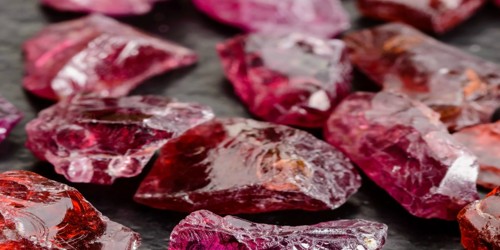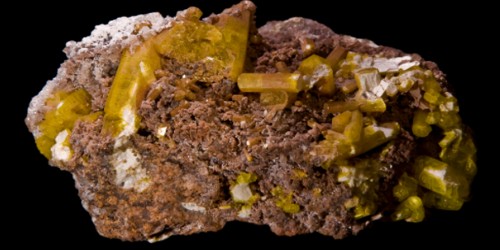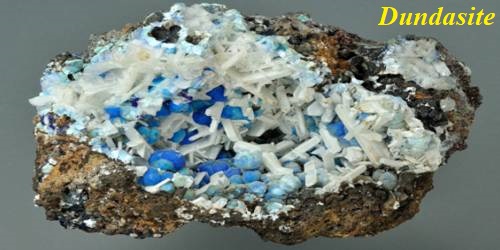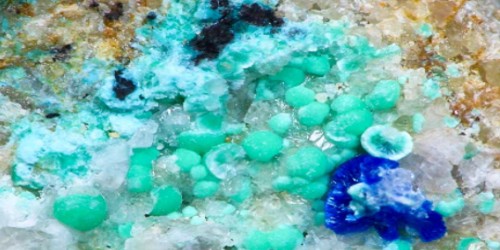Garnets are a group of silicate minerals that have been used since the Bronze Age as gemstones and abrasives. It is a precious stone consisting of a deep red vitreous silicate mineral. All species of garnets possess similar physical properties and crystal forms but differ in chemical composition. The different species are pyrope, almandine, spessartine, grossular, uvarovite, and andradite. The garnets make up two solid solution series: pyrope-almandine-spessartine and uvarovite-grossular-andradite.
General Information
- Category: Nesosilicate
- Formula: The general formula X3Y2(SiO4)3
- Crystal system: Isometric
- Color: virtually all colors, blue very rare
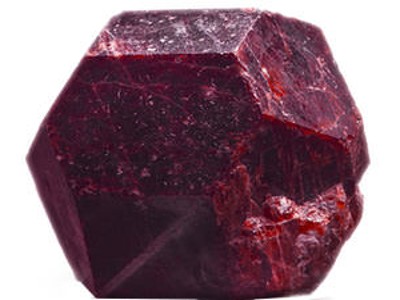
Fig: Garnets
Properties
Garnet species are found in many colors including red, orange, yellow, green, purple, brown, blue, black, pink, and colorless, with reddish shades most common. Because the chemical composition of garnet varies, the atomic bonds in some species are stronger than in others. As a result, this mineral group shows a range of hardness on the Mohs scale of about 6.5 to 7.5. The harder species like almandine are often used for abrasive purposes.
- Crystal habit: Rhombic dodecahedron or cubic
- Cleavage: Indistinct
- Fracture: conchoidal to uneven
- Mohs scale hardness: 6.5–7.5
- Luster: vitreous to resinous
- Streak: White
- Specific gravity: 3.1–4.3
- Optical properties: Single refractive, often anomalous double refractive.
Information Source:
